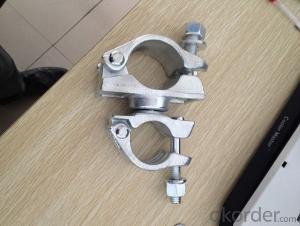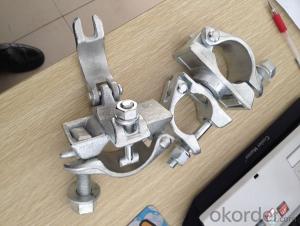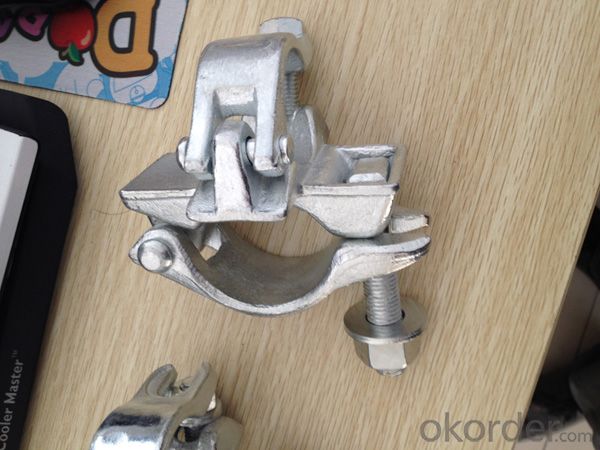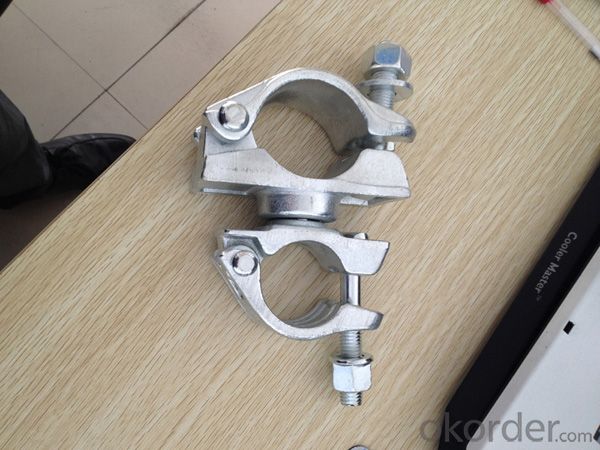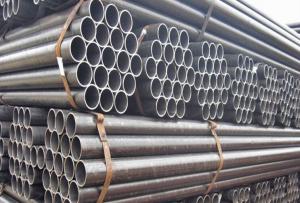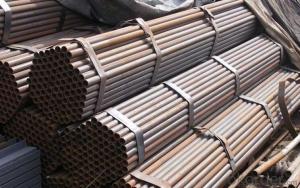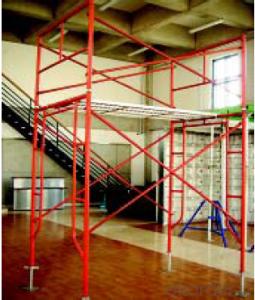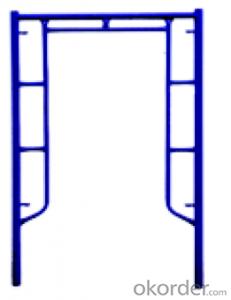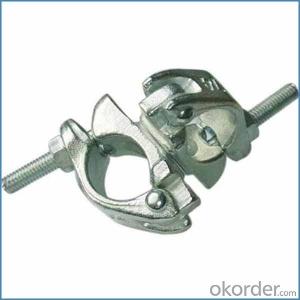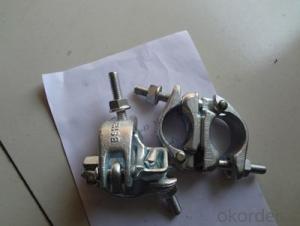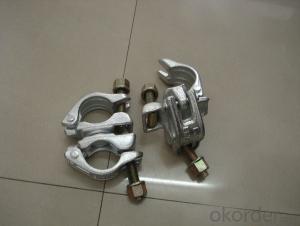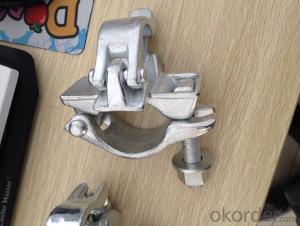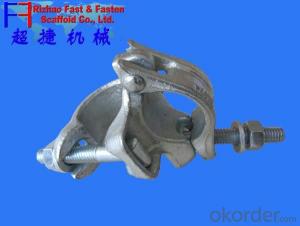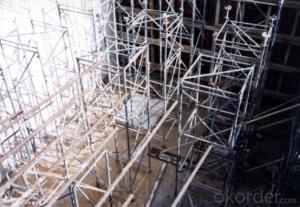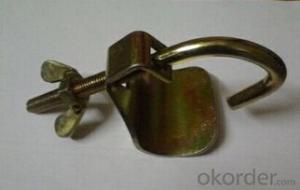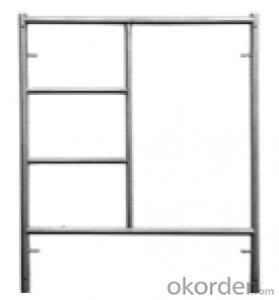scaffolding forged irregualr coupler
- Loading Port:
- Nanjing
- Payment Terms:
- TT OR LC
- Min Order Qty:
- 1000 pc
- Supply Capability:
- 30000 pc/month
OKorder Service Pledge
OKorder Financial Service
You Might Also Like
Drop forged irregualr coupler
1.size:48.3mm×63mm
2.weight:1.8kg
3.Material: Q235/225/345
4.surface :self-color / zinc plate / electro galvanized / HDG or painted
5.Standard: EN74 ,BS1139
6.Anti-rust ,skidproof ,high breaking strength
7.Durable finish, reliability, low maintenance, corrosion resistance, robust construction and high tensile strength
8. OEM serice is available
SPECIFICATIONS:
1 MATERIAL:Q235
2 SWIVEL AND DOULE RIGHT ANGLE COUPLER
3 DROP FORGED AND PRESSED
4 BS1139 AND EN74 STANDARD
5 SIZE:48.3*48.3MM
6 PRESSED AND DROP FORED SWIVEL AND FIXED COUPLER/PUTLOG COUPLER/SLEEVE COUPLER/INNER CONNECTOR/BEAM COUPLER ETC.
Pressed swivel coupler 1.02kg galvanized/ hot dipped galvanized
Pressed fixed coupler 0.85kg galvanized / hot dipped galvanized
DROP FORGED SWIVEL COUPLER 0.98kg galvanized / hot dipped galvanized
DROP FORGED SWIVEL COUPLER 1.12kg
DROP FORGED PUT LOG COUPLER 0.62KG galvanized / hot dipped galvanized
SLEEVE COUPLER 1.0KG galvanized / hot dipped galvanized
DROP FORGED FIXED BEAM COUPLER 1.45KG galvanized / hot dipped galvanized
DROP FORGED SWIVEL GRINDER COUPLER 1.5KG galvanized / hot dipped galvanized
7 SUITABLE FOR PIPE DIAMETER:48MM,48.3MM,60.3MM
8 Payment terms:30%TT deposit, balance against BL copy or LC at sight
9 FOB .CIF.C&F ,CFR acceptable
10 Delivery time;20-30days after receiving deposit
- Q: book regarding scaffolding?
- are u refering to the scarlet letter? where the scaffold appears many times?
- Q: How do you ensure proper stability when using steel tube couplers in confined spaces scaffolding?
- To ensure proper stability in confined spaces scaffolding when using steel tube couplers, there are several measures that can be implemented: 1. Maintain adequate spacing: It is crucial to space the steel tube couplers evenly along the scaffolding structure. This will effectively distribute the load and prevent any weak points. 2. Ensure secure connections: Take care to properly tighten and secure the steel tube couplers to the scaffolding tubes. Loose connections can compromise stability and increase the likelihood of accidents. 3. Achieve proper alignment: Verify that the scaffolding tubes are correctly aligned and fully inserted into the steel tube couplers. Misalignment can result in weak connections and diminished stability. 4. Utilize diagonal bracing: Incorporate diagonal bracing within the scaffolding structure to enhance stability. These braces aid in evenly distributing the load and preventing excessive movement. 5. Conduct regular inspections: Regularly examine the steel tube couplers and scaffolding structure for any indications of damage or wear. Promptly replace any compromised or worn-out components to maintain stability and safety. 6. Ensure proper weight distribution: Avoid placing excessive weight on any particular section of the scaffolding. Distributing the load evenly across the structure prevents overloading and preserves stability. 7. Adhere to manufacturer guidelines: Always adhere to the instructions and guidelines provided by the manufacturer when working with steel tube couplers in confined spaces scaffolding. This ensures correct usage and maximizes stability. By adhering to these guidelines, one can ensure proper stability when utilizing steel tube couplers in confined spaces scaffolding, thereby minimizing the risk of accidents and creating a safe working environment.
- Q: Are steel tube couplers suitable for scaffolding projects with specific load distribution needs?
- Scaffolding projects with specific load distribution needs can benefit from the use of steel tube couplers. These couplers are designed to securely connect scaffolding tubes, guaranteeing stability and strength. They are commonly employed in construction and industrial projects where safety and load distribution are paramount. Steel tube couplers excel at handling heavy loads and are engineered to evenly distribute weight, preventing concentration on a single point. This safeguards the structural integrity of the scaffolding and mitigates the risk of failures or collapses. What's more, steel tube couplers come in various types and sizes, enabling design flexibility and customization. This makes it possible to construct scaffolding structures that meet specific load distribution requirements. Additionally, steel tube couplers facilitate quick and easy assembly and disassembly. This proves particularly advantageous in time-sensitive projects or situations requiring frequent movement of the scaffolding. The ease of installation also allows for adjustments during the construction process, ensuring effective fulfillment of load distribution needs. In conclusion, steel tube couplers are a dependable and appropriate choice for scaffolding projects with specific load distribution requirements. They provide the necessary strength, stability, and flexibility while prioritizing worker safety and structure integrity.
- Q: Can steel tube couplers be used for scaffolding projects in corrosive chemical environments?
- When working on scaffolding projects in corrosive chemical environments, it is crucial to take extra measures to ensure the durability and safety of steel tube couplers. Corrosive chemicals can cause significant harm to steel, resulting in weakened strength and potential structural failure. To minimize this risk, it is essential to select steel tube couplers that are specifically designed for use in corrosive environments. These couplers should be constructed from highly corrosion-resistant materials, such as stainless steel or galvanized steel. These materials have protective coatings that can endure exposure to corrosive chemicals, preventing rusting and degradation. Furthermore, regular maintenance and inspections must be conducted to identify any signs of corrosion or damage. Any affected couplers should be promptly replaced to maintain the integrity of the scaffolding structure. It is also advisable to employ protective measures, such as applying coatings or sealants, to enhance the resistance of the steel tube couplers against corrosive chemicals. However, it is important to acknowledge that even with these precautions, steel tube couplers may still have limitations in extremely corrosive chemical environments. In such cases, alternative materials, like non-metallic couplers or specialized scaffolding systems, may be more suitable to ensure the safety and longevity of the scaffolding project. Consulting with experts or engineers familiar with the specific corrosive chemical environment is always recommended to determine the most appropriate scaffolding solution.
- Q: Are steel tube couplers compatible with different types of scaffold tubes?
- Steel tube couplers can be used with different types of scaffold tubes. They are specifically designed to connect and secure scaffold tubes together, regardless of their specific type or dimensions. These couplers have a universal design that allows them to be used with various types of scaffold tubes, including steel, aluminum, and composite tubes. They are adjustable and can accommodate different tube sizes and shapes, ensuring a secure and stable connection between the tubes. Therefore, whether you are using steel, aluminum, or composite scaffold tubes, you can trust steel tube couplers to effectively connect them and create a safe and sturdy scaffolding structure.
- Q: How do you inspect steel tube couplers for any signs of wear or damage?
- Inspecting steel tube couplers for signs of wear or damage is an essential part of maintenance and ensuring their structural integrity. Here are the steps you can follow to inspect steel tube couplers: 1. Visual Inspection: Start by visually inspecting the couplers for any visible signs of wear or damage. Look for cracks, deformations, or signs of corrosion on the surface. Pay attention to areas where stress is concentrated, such as welds and connections. 2. Clean the Couplers: Before proceeding with a detailed inspection, clean the couplers thoroughly to remove any dirt, debris, or rust. This will help you better assess the condition of the couplers. 3. Non-Destructive Testing (NDT): Perform non-destructive testing techniques such as ultrasonic testing, magnetic particle inspection, or dye penetrant testing. These methods can detect internal cracks, defects, or material inconsistencies that might not be visible during a visual inspection. 4. Measurement and Calibration: Use calipers or other measuring tools to check the dimensions of the couplers, ensuring they meet the required specifications. Measure the diameters, lengths, and thicknesses to identify any deviations that might compromise the couplers' performance. 5. Load Testing: For critical applications, you may need to perform load testing on a sample of couplers. This involves subjecting the couplers to predetermined loads and checking for any signs of deformation, cracking, or failure. 6. Documentation: Throughout the inspection process, document your findings and observations, noting any wear or damage you discover. Include photographs, measurements, and any test results for future reference and comparison. 7. Regular Maintenance: Finally, it is essential to establish a regular maintenance schedule for inspecting steel tube couplers. Depending on the application and conditions, this could be monthly, quarterly, or annually. Regular inspections can help identify and address potential issues before they lead to more significant problems. Remember that the above steps serve as a general guide, and specific inspection procedures may vary based on the type of couplers, industry standards, or regulations. Always refer to the manufacturer's guidelines and consult with qualified professionals when inspecting steel tube couplers.
- Q: Can steel tube couplers be used in scaffolding systems that require high load-bearing capacity?
- Yes, steel tube couplers can be used in scaffolding systems that require high load-bearing capacity. Steel tube couplers are specifically designed to join tubes together in scaffolding structures, providing a secure and strong connection. They are made from high-quality steel, which offers excellent strength and durability, making them suitable for supporting heavy loads. Additionally, steel tube couplers undergo rigorous testing and meet industry standards to ensure their load-bearing capacity. Therefore, they are a reliable choice for scaffolding systems that require high load-bearing capacity.
- Q: How do steel tube couplers contribute to the versatility of a scaffolding system?
- The versatility of a scaffolding system is greatly enhanced by the use of steel tube couplers. These couplers are specifically designed to connect and secure the steel tubes used in scaffolding structures, creating a strong and stable platform for construction and maintenance work. To begin with, steel tube couplers allow for the quick and easy assembly and disassembly of scaffolding systems. Workers can easily tighten or loosen the couplers using basic hand tools, enabling them to swiftly adjust the height and configuration of the scaffolding as needed. This flexibility ensures that the scaffolding system can be adapted to different job requirements, resulting in an efficient and seamless workflow. Additionally, steel tube couplers provide a secure and reliable connection between the steel tubes, ensuring the overall stability and safety of the scaffolding structure. The couplers firmly hold the tubes in place, preventing any movement or slippage during use. This is particularly important for the safety of workers who depend on the scaffolding system while working at various heights. Moreover, steel tube couplers allow for the creation of complex scaffolding structures. By connecting multiple tubes at different angles and positions, the couplers enable the construction of scaffolding systems that can adapt to the specific needs of a project. Whether it is a straight, angled, or curved configuration, the versatility provided by the couplers allows for the creation of custom scaffolding designs that can accommodate various architectural or construction challenges. Furthermore, the use of steel tube couplers eliminates the need for welding or specialized tools, making the assembly and modification of scaffolding systems easier and more cost-effective. The couplers can be easily removed and reused, reducing material waste and saving both time and money. In conclusion, steel tube couplers play a crucial role in enhancing the versatility of a scaffolding system. They enable easy assembly and disassembly, provide a secure connection, allow for complex structures, and offer a cost-effective solution. Their contribution to the adaptability and efficiency of scaffolding makes them an essential component in the construction and maintenance industry.
- Q: Are there any specific regulations or guidelines for the disposal of steel tube couplers?
- Yes, there are specific regulations and guidelines for the disposal of steel tube couplers. In most cases, steel tube couplers are considered scrap metal and can be disposed of at recycling facilities or sold to scrap metal dealers. However, it is important to ensure that any hazardous substances or contaminants are properly removed before disposal, and local regulations regarding the disposal of scrap metal should be followed. Additionally, organizations or industries that generate a large quantity of steel tube couplers may have specific disposal guidelines in place to ensure proper handling and recycling.
- Q: I'm looking to move to oz I'm 42 i have 2 small children and a partner i have a lot of cards scaffolding level 2 and i have my off shore 1s 2 i have over ten years off shore but i have no savings just about 5 grand as my gf spent them all lol . whats the best way to get in can i go on work visa or go on a long holiday find a job while there and apply to stay or is this against the law im wanting to go asap please help i do not know if scafolin is a trade and if it is is it under a different name on visa application
- Scaffolder is not considered to be a trade in Australia and is not included on any lists of occupations that are eligible for an immigration visa. Having a job offer or employer sponsorship makes no difference - the occupation is simply not eligible. The occupation is ANZSCO code 821712 Scaffolder and no Level 8 occupations are included on any lists.
Send your message to us
scaffolding forged irregualr coupler
- Loading Port:
- Nanjing
- Payment Terms:
- TT OR LC
- Min Order Qty:
- 1000 pc
- Supply Capability:
- 30000 pc/month
OKorder Service Pledge
OKorder Financial Service
Similar products
Hot products
Hot Searches

